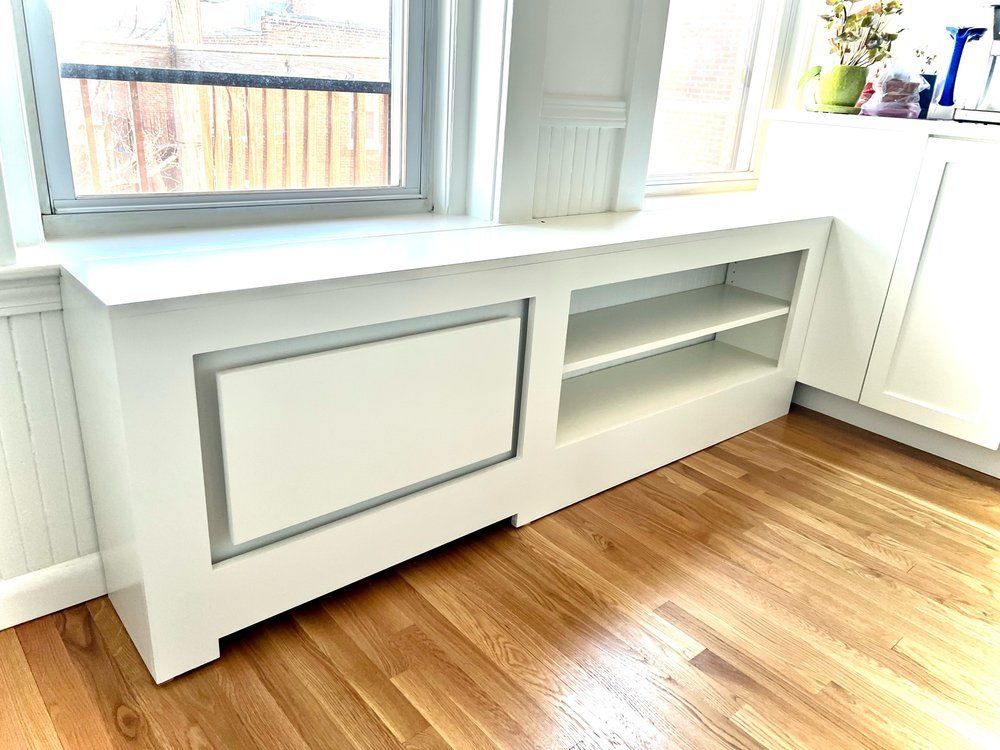The Buzz on Radiator Covers
Wiki Article
Getting The Radiator Covers To Work
Table of ContentsAbout Radiator CoversTop Guidelines Of Radiator CoversThe smart Trick of Radiator Covers That Nobody is DiscussingRadiator Covers for DummiesRadiator Covers Fundamentals Explained
Once the latches are launched, very carefully lift the cover off the radiator. Make sure the area around the radiator is clear to stop accidents.Radiator covers can be fairly useful in a home. Radiators are typically not the most eye-catching features in a room.
Remarkably, some radiator covers can likewise enhance performance. A good cover will have a reflective backing that presses warm back into the area instead than allowing it increase to the ceiling.
Furniture or curtains also near to the radiator can block the warmth, making it much less efficient. It is very important to enable space around the radiator for optimal warmth circulation. Sometimes, individuals use radiator covers to lower clutter. By placing a cover over the radiator, the top can be made use of as a rack for light things.
Getting The Radiator Covers To Work

This guide will certainly offer a detailed review of, consisting of different kinds like, radiator pipe covers, and. It will discover the possible benefits of setting up covers, such as improving decor, preventing burns for homes with kids, and enabling placement of items on the top. You can additionally know concerning radiator cover with storage.
Radiator covers with storage: Covers that incorporate cupboards, racks or drawers for saving home products or decorations easily. One of the largest questions around radiator covers is whether they hinder the warmth result from radiators by blocking air flow - Radiator Covers.
Radiator cover styles play a significant function. Vented covers, spaced off the wall, are better than unvented covers directly versus walls also.
The smart Trick of Radiator Covers That Nobody is Talking About

Leaving space enables warm dissipation. Vented radiator covers are better for warmth blood circulation than unvented variations. Adding fans assists extract and flow warmth too. Plus, putting ornamental items/baskets on shelves instead of directly on the top reduces insulation. Inevitably there are ways to decrease loss when using covers: Use slotted/perforated layouts spaced off walls Opt for lighter products like mesh wire or lattice timber Just cover radiator piping/valves, not complete systems Integrate ventilation ports or followers in confined covers Raise items placed on integrated shelvesFollow these ideas and cover styles need not exceedingly decrease home heat.
Here are the major benefits: Do radiator covers block warm? Yes, they check my site do. Radiator covers provide a vital safety and security obstacle for homes with young kids or pets. Subjected warm radiators posture burn risks from unintentional call. Covers work as physical protection, obstructing accessibility with solid ornamental grilles or coverings. When childproofing radiators, it is something you need to obtain.
The Facts About Radiator Covers Revealed
Also covers with ventilation slots significantly limit straight contact. Safety overrides small heat reduction, though slotted layouts decrease loss much better than completely enclosed. Radiator covers boost home dcor by hiding unpleasant rads in style. The personalized series of shapes, dimensions, products and finishes available allows matching any type of area's aesthetic. Conventional ornate steel styles fit antique decor, while structured modern covers boost contemporary rooms.Or patterned covers include unique aesthetic rate of interest. Home owners can utilize covers to straighten functional radiator components with their wanted interior appearance. Some radiator covers optimize performance by incorporating storage space. Lift-top styles disclose storage space compartments best for added coverings, publications or baskets. Extra fancy covers have pull-out cabinets, closets and shelves for concealed storage without mess.
Included storage space and noise reduction provide wonderful secondary utility. Picking you could try here the excellent radiator cover involves a balance between style, performance, and effectiveness. Right here's a broadened take a look at the crucial variables to consider: Radiator covers come in a series of materials, each with their advantages and disadvantages. Metal covers made from steel, aluminum or iron are long lasting and heat-resistant.
The Ultimate Guide To Radiator Covers
Lots of firms currently offer pipework covers only if you desire to mix pipes in with walls rather than conceal complete radiators. With interest to detail during choice, house owners can install radiator covers that securely enhance area decor, give added storage, and make best use of home heating system possibility.
Report this wiki page